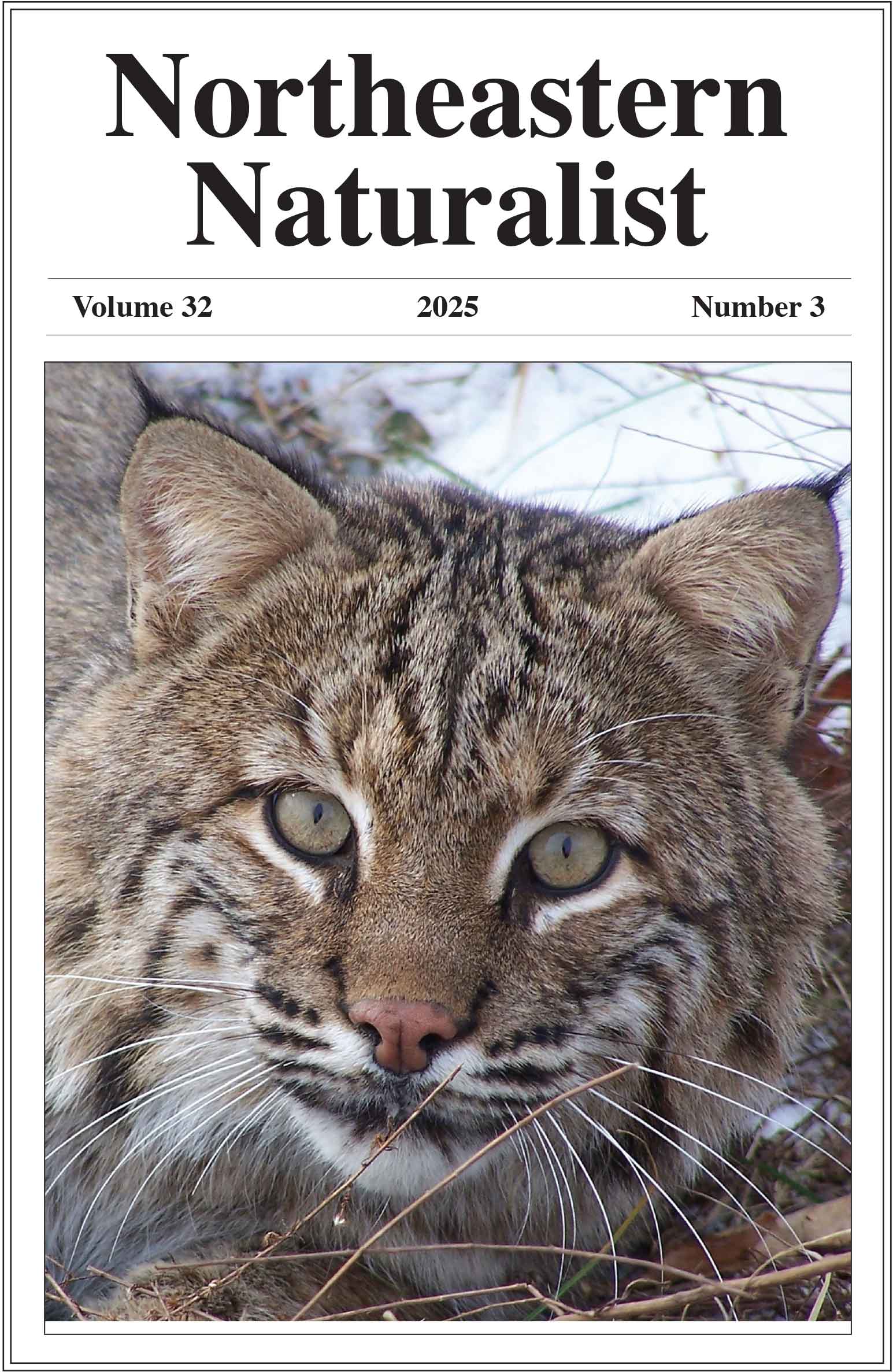Opportunistic Vessel-Based Detections of Migratory Bats in the Gulf of Maine
M. Wing Goodale1,*, Paul Knaga2, Sarah Dodgin1, Ethan Gilardi1,Joshua M. Guilbert1, Marian Howe1, Brianna Frankina1, and Cory Stearns3
1Biodiversity Research Institute, Portland, ME 04103. 2Canadian Wildlife Service, Environment and Climate Change Canada, Dartmouth, NS B2Y 2N6, Canada. 3Maine Department of Inland Fisheries and Wildlife, Augusta, ME 04330. *Corresponding author.
Northeastern Naturalist, Volume 32, Issue 2 (2025): 168–178
First published early online: 10 May 2025
Abstract
Offshore wind energy is being pursued in the Gulf of Maine (Gulf) to reduce dependence on fossil fuels; yet wind turbines pose a collision risk for bats. Previous efforts to monitor bat activity in the Gulf have involved acoustic surveys from stationary platforms, such as buoys and islands. However, acoustic monitoring from vessels opportunistically transiting through the Gulf offers a promising method to capture bat activity further offshore and across both spatial and temporal gradients. To explore the utility of this approach and expand on the growing research on bat presence in the Gulf, acoustic bat detectors were deployed on marine vessels in the Gulf and collected data during periods from April through May and August through October 2024. A total of 69 offshore bat passes were recorded, including calls from Lasiurus cinereus (Hoary Bat), Lasionycteris noctivagans (Silver-haired Bat), and Lasiurus borealis (Eastern Red Bat). Eastern Red Bat and Silver-haired Bat detections were the furthest from shore (136 km and 169 km, respectively), indicating the presence of bats near offshore wind-lease areas during both spring and fall.
![]() Download Full-text pdf (Accessible only to subscribers. To subscribe click here.)
Download Full-text pdf (Accessible only to subscribers. To subscribe click here.)
Access Journal Content
Open access browsing of table of contents and abstract pages. Full text pdfs available for download for subscribers.
Issue-in-Progress: Vol. 32(4) ... early view
Check out NENA's latest monograph and Special Issue:













 The Northeastern Naturalist is a peer-reviewed journal that covers all aspects of natural history within northeastern North America. We welcome research articles, summary review papers, and observational notes.
The Northeastern Naturalist is a peer-reviewed journal that covers all aspects of natural history within northeastern North America. We welcome research articles, summary review papers, and observational notes.